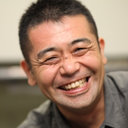[Japanese cedar pollinosis in children in our allergy clinic].
Kľúčové slová
Abstrakt
Recently, it is pointed out that the incidence of Japanese cedar pollinosis has increased in children. We studied on the rate of sensitization and the onset of the disease in children under sixteen who visited allergy clinic in the Department of Otorhinolaryngology in Mie University Hospital. The percentage of positive rate of skin test and IgE antibodies of house dust mite was about 80 to 90% in 1981, 1991, and 1996. However, the percentage of positive rate of skin test and IgE antibodies of Japanese cedar pollen was 43% and 26%, respectively in 1981, but both increased to 58% in 1996. Most of Japanese cedar pollinosis patients also had house dust mite allergy. Among 115 pediatric patients who visited our allergy clinics in the past seven years, 32.2% were allergic to house dust mite alone, 8.6% were allergic to Japanese cedar pollen alone, 40.9% were allergic to both, and 6.1% were allergic to house dust mite, Japanese cedar pollen, and orchard grass pollen. 68% of the total 115 patients were boys, but significantly more girls had the pollinosis. 17.4% of those who are sensitized to the pollen were asymptomatic during the pollen season. Thus, it was confirmed that the rate of children sensitized to the pollen has apparently increased for the past twenty years. We should take care of those children who are sensitized to the pollen but asymptomatic during the pollen season.



